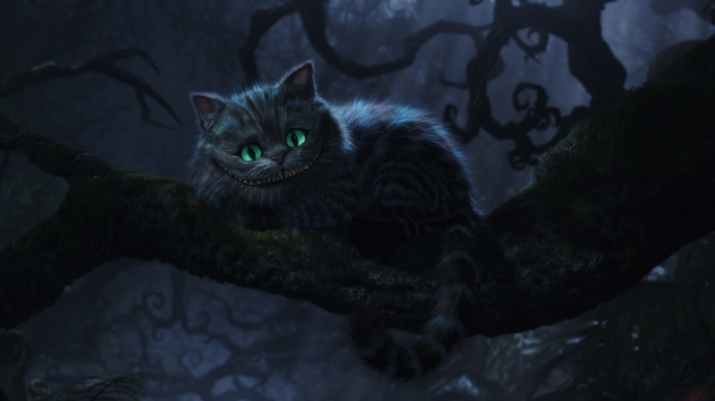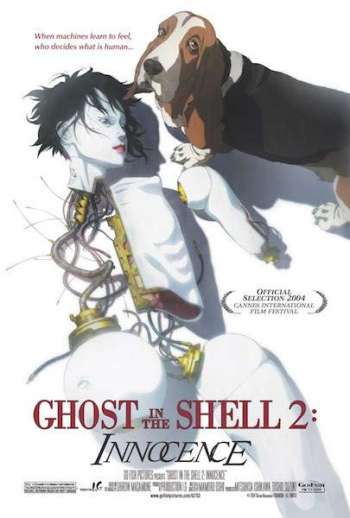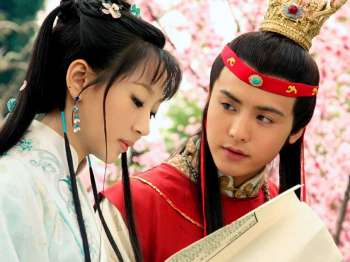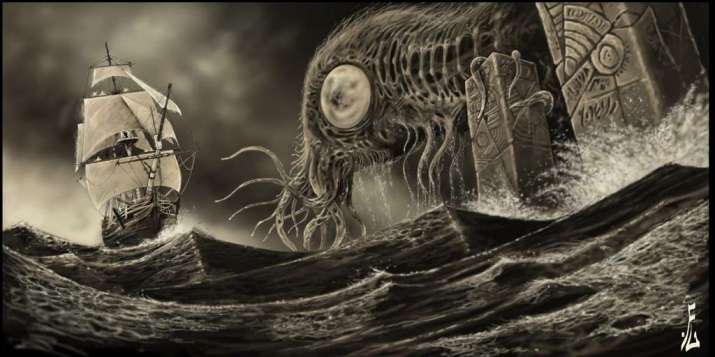Buddhistdoor View: Illusion and Insight in Secular Literature
By Buddhistdoor
Buddhistdoor Global
| 2015-07-10 |  The Cheshire Cat from Tim Burton's film adaptation (2010). From comicvine.com
The Cheshire Cat from Tim Burton's film adaptation (2010). From comicvine.comLast Saturday, 4 July, was the 239th anniversary of America’s Declaration of Independence. But it was also the 150th anniversary of something far more whimsical: Lewis Carroll’s literary nonsense classic, Alice’s Adventures in Wonderland. Lewis Carroll’s story is of a little girl who falls down a rabbit hole into a fantastic realm populated by magical creatures and nonsensical characters. It ends with Alice waking up from what turns out to be a dream, leaving the reader to dwell on motifs of childhood, innocence, and growing up, the apparent meaningless of life, and the shadow of violence (many of us remember the Queen of Hearts’s commanding “Off with their heads!”).
As a story set in a dream, Alice’s Adventures in Wonderland is also one of several fictional worlds that explore ideas and themes about illusion and its opposite, insight. Exploring such “illusory fiction” can be a thought-provoking means to investigate how literature and popular culture grapple with the sense that reality is not what it seems. Similar to what many great religions tell us, stories concerning illusory fiction posit that the only way for the protagonist to earn redemption is to break out of their false reality.
 Movie poster for "Ghost in the Shell: Innocence"
Movie poster for "Ghost in the Shell: Innocence" Jia Baoyu and Lin Daiyu in "Dream of the Red Chamber"
Jia Baoyu and Lin Daiyu in "Dream of the Red Chamber"This sense or awareness in secular literature is well founded. It is symptomatic of a primal unease shared by people across cultures, from a time beyond the reach of memory. This sense is articulated best by the Indian religious heritage: that this world is fundamentally maya (or, more commonly in Buddhism, samsara) and that comprehending reality and hence escaping death, suffering, and other existential problems depend on glimpsing the true reality beyond maya.
How is illusion dispelled and insight gained? It depends on which author you ask. In Lewis Carroll’s book, Alice manages it by literally waking up, which is an interesting parallel to the Buddhist image of awakening from the deep sleep of samsara. In the “simulated reality” trope of science fiction, one achieves emancipation by unplugging one’s consciousness from a futuristic technology.
Recent decades have seen the global popularity of “simulated reality” à la The Matrix and Ghost in the Shell. In The Matrix, a malevolent force imposes the false reality on us, whilst Masamune Shirow’s franchise posits an illusory world willingly embraced through cybernetic minds.
In other genres, illusion is defeated and insight attained through a supernatural source, or the encounter with a divinity or the forbidden, terrifying truth. One theme in Lovecraftian horror, for example, is how protagonists are reduced to dribbling wrecks of insanity once they comprehend humanity’s smallness in a universe populated by alien, eldritch monsters.
In perhaps the greatest work of Chinese literature, Cao Xueqin’s Dream of the Red Chamber, the peculiar, abnormal nature of protagonist Jia Baoyu is linked, right from the outset,
to his previous incarnation in the celestial past as a stone that loved a fairy plant (the latter reincarnates as Baoyu’s beloved Lin Daiyu). Baoyu’s authoritarian father understands his erratic behavior, emotional fragility, and eventual breakdown and disappearance only after coming to terms with his otherworldly circumstances.
However, as a product of literary nonsense, Alice’s illusory world is even more absurd than those of the other narratives. There is at least narrative coherence in The Matrix and Ghost in the Shell, Lovecraftian horror, and Dream of the Red Chamber. Problems and flaws in the simulated realities drive the stories of The Matrix and Ghost in the Shell, but the origins of those realities make sense within the narrative framework. H. P. Lovecraft’s vision of reality was misanthropic, but readers at least knew why that was so. And Dream of the Red Chamber explains from the get-go why Jia Baoyu is not of the human world.
In contrast, Wonderland subverts itself through the bent logic and language presented throughout its distorted world. Wonderland’s characters have personalities and motivations that do not make sense, from the moody Caterpillar to the Cheshire Cat, who says to Alice, “We’re all mad here. I’m mad. You’re mad. . . . You must be, or you wouldn’t have come here.” Riddles, dialogue, and occurrences in Wonderland have no rational premise or resolution, with a baby turning into a pig in Alice’s arms, flamingos being used as croquet mallets at the court of the Queen of Hearts, and the Mad Hatter asking his famous nonsensical riddle, “Why is a raven like a writing desk?,” to which his own answer is, “I haven’t the slightest idea!”
 A typical encounter with madness-inducing insight in Lovecraftian horror. From dailydot.com
A typical encounter with madness-inducing insight in Lovecraftian horror. From dailydot.comAs apparent protagonists of our own lives, we need to break out of the dream world we find ourselves in. Buddhists believe that the resources of their tradition—doctrines, meditation and other practices, or Buddhist divinities—provide the best tools for accomplishing such a feat. We’ll continue encountering many entertaining ideas about the world of illusions in pop culture, but our own predicament in this cosmic maya is deadly serious. Our journey, unlike Alice’s, is also much more complicated. We've only begun to scratch at the surface of reality, of how things really are.
Unlike lucky Alice, we haven’t yet woken up.



















